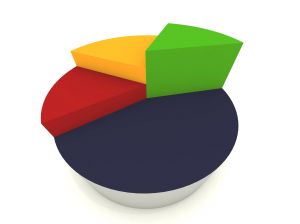Getting a Home Insurance Inspection
Free Home Insurance Comparison
Compare Quotes From Top Companies and Save
Secured with SHA-256 Encryption
Joel Ohman
Executive Chairman
Joel Ohman is the CEO of a private equity-backed digital media company. He is a published author, angel investor, and serial entrepreneur who has a passion for creating new things, from books to businesses. He has previously served as the founder and resident CFP® of a national insurance agency, Real Time Health Quotes. He has an MBA from the University of South Florida. Joel has been mentione...
Executive Chairman
UPDATED: Mar 22, 2022
It’s all about you. We want to help you make the right coverage choices.
Advertiser Disclosure: We strive to help you make confident car insurance decisions. Comparison shopping should be easy. We are not affiliated with any one car insurance company and cannot guarantee quotes from any single company.
Our partnerships don’t influence our content. Our opinions are our own. To compare quotes from top car companies please enter your ZIP code above to use the free quote tool. The more quotes you compare, the more chances to save.
Editorial Guidelines: We are a free online resource for anyone interested in learning more about auto insurance. Our goal is to be an objective, third-party resource for everything auto insurance related. We update our site regularly, and all content is reviewed by auto insurance experts.
UPDATED: Mar 22, 2022
It’s all about you. We want to help you make the right coverage choices.
Advertiser Disclosure: We strive to help you make confident car insurance decisions. Comparison shopping should be easy. We are not affiliated with any one car insurance company and cannot guarantee quotes from any single company.
Our partnerships don’t influence our content. Our opinions are our own. To compare quotes from top car companies please enter your ZIP code above to use the free quote tool. The more quotes you compare, the more chances to save.
On This Page
At one time, your local insurance agency or an employee of the insurance company was paid to do a home insurance inspection.
These were brief stops that an individual made with a camera and, perhaps, a tape measure to look at a building the insurance company was covering with insurance.
Agents had to submit one or two photos to verify the condition of the building.
During the 60’s and 70’s, insurance companies discovered, usually after a total loss, that the building or home they were insuring sometimes had been a shack without windows and doors located on a shabby lot.
Since neither the agent nor the company had seen the building or had photographs, payments were made on disturbingly poor risks. Insurance companies corrected this by requesting photos from agents for every home insured or by paying companies to ‘inspect’ dwellings.
This inspection examined the area around the home, condition of the dwelling, maintenance and upkeep, as well as any visible fire threats from trees or brush around the building.
Usually a photograph and brief inspection is made to send data back to insurance underwriters. As homes and construction costs increase, however, insurance companies are requesting that thorough home insurance inspections be completed.
These home inspectors will examine your home for fire hazards, possible liability problems, as well as verify fire, burglar, and smoke alarms. They measure the area of your home and help determine the replacement cost of the home by examining the construction.
A home inspector will help you determine what steps need to be taken to further protect yourself and your family.
Perhaps your wiring is not up to code in ways that can cause fire and injury, or perhaps you should be given additional credit on your insurance policy for an exceptionally well-installed central-station burglar alarm.
There ar
Usually, if the premiums are high enough and valuations of concern, the company will send out their own insurance inspector.
They will make an appointment with you and provide identification to verify their mission and presence.
Purchasing Home Insurance
Getting the best deal on home insurance is debatable.
To find the best deal on home insurance, you need to do comparison-shopping for the premium, perils covered, deductible, and quality of the insurance company providing the policy.
As with any type of shopping, you need to know the steps to obtain reasonable quotes.
Decide What Insurance Is Needed
To begin with, you need to determine if you want to purchase replacement cost insurance or actual cash value insurance. These differ by the way claims are paid and how much insurance you need to purchase.
- Replacement Cost – pays for the amount needed to replace the building and/or its contents with like kind and quality. Usually the building must be insured for at least 90% of the replacement value.
- Actual Cash Value – pays for the current cost of the building and/or contents less age, wear and tear, and depreciation. Insurance companies require that you purchase 80% of the actual cash value.
Determining how much insurance it will take to replace a building may be done by using online calculators.
One of these Building-Cost.net, a website for estimations. Your agent may have calculators that are available, or you could acquire this information from an insurance inspector.
Work with your mortgage insurance company and insurance agent to determine the amount of coverage you need on the primary dwelling.
Recognize that you will not be insuring the land beneath your home.
Land is indestructible, so it doesn’t need insurance. The house and amenities on the land, however, are insurable.
After Determining the Insurable Value of the Building

For discussion purposes, we are going to assume that the building is worth $150,000.
- Dwelling – $150,000
- Other structures such as detached garages or fences 10% of the dwelling amount, or $15,000
- Personal property – contents of the dwelling – 50% of the building amount, or $75.000
- Loss of use – to help pay for living expenses if you should have to leave the dwelling for a named peril – 20% of the dwelling amount, or $30,000
Liability Coverage
The liability coverage under the home policy is a uniquely portable type of liability coverage that provides protection for the premises and follows the members of the household.
Limits from $100,000 to $500,000 are available. You should judge your possible needs in the event of a lawsuit for defense attorneys, claims costs, and incidentals.
Medical Expense Coverage
Medical expense coverage pays for injuries that occur on the premises of your home Limits may be set for $500 to $5,000, depending upon your needs.
Deductibles
A reasonable deductible can save money if your insurance company gives credits for higher deductibles. A deductible is subtracted from the amount of a claim before the insured is paid.
Perils To Be Covered
Peril is the insurance term that refers to the risks or reasons for a loss. Home policies typically provide insurance coverage for the perils stated. Most people choose the special form of home insurance, which covers the following:
- Smoke, fire, lightning, explosion, windstorm, hail, explosion, vehicles and civil unrest
- Theft and vandalism
- Falling objects, including trees
- Weight of sleet, snow, and ice
- Freezing, rupturing, or sudden overflow of plumbing, heating, and air-conditioning systems as well as household appliances
Be sure to note that flood and earthquake coverage is not afforded under this type of policy.
To acquire flood coverage and information go to FloodSmart, and contact a local agent about earthquake insurance. Your mortgage company may require one or the other of these types of coverage.
Choosing Insurance Companies

To find information about insurance companies and agents, go to your state’s website.
Finding the site for the Commissioner of Insurance for your state may be done by going to the National Association of Insurance Commissioners (NAIC) website and click on your state in the map provided.
The website for your state can give you a great deal of consumer information as well as the license status of the insurance company or agent.
Financial status of an insurance company is important to the purchaser because this financial status can indicate the ability of the company to meet its obligations to the insured.
Another piece of information that may be necessary to you is the ratio of complaints to premiums sold by the insurance company. This information can be found by going to:
- NAIC Website
- A. M. Best Company – ratings for the insurance industry
- Standard and Poors ratings
At this point, you will have the information needed to ask for a quotation for home insurance from several companies to compare premiums.
Be certain to ask for the same coverage from the companies and compare the quotations carefully.
Enter your zip code below to view companies that have cheap home insurance rates.
Secured with SHA-256 Encryption
Joel Ohman
Executive Chairman
Joel Ohman is the CEO of a private equity-backed digital media company. He is a published author, angel investor, and serial entrepreneur who has a passion for creating new things, from books to businesses. He has previously served as the founder and resident CFP® of a national insurance agency, Real Time Health Quotes. He has an MBA from the University of South Florida. Joel has been mentione...
Executive Chairman
Editorial Guidelines: We are a free online resource for anyone interested in learning more about auto insurance. Our goal is to be an objective, third-party resource for everything auto insurance related. We update our site regularly, and all content is reviewed by auto insurance experts.
